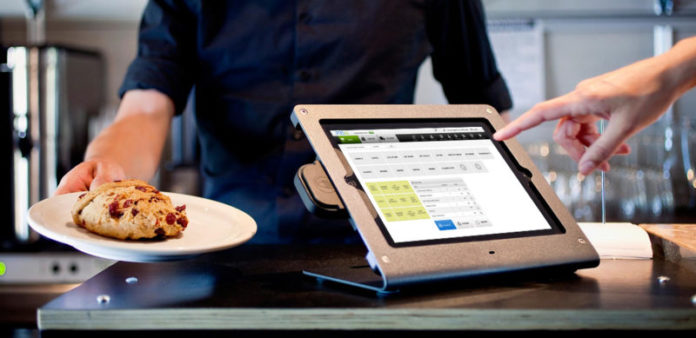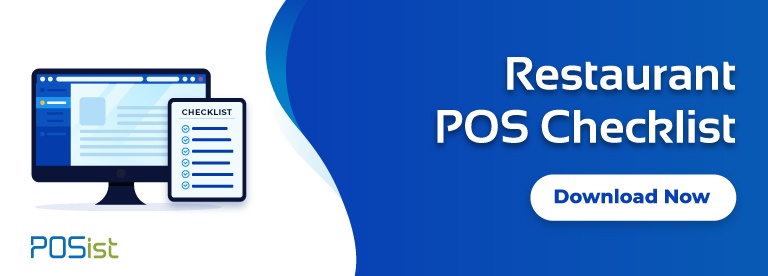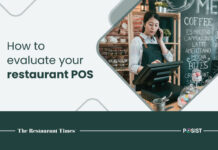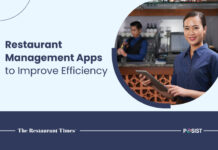Technology has invaded every business, and the restaurant business is no exception. The traditional way of taking orders was writing customers’ orders on a piece of paper and then communicating the order to the kitchen. The bills were then calculated manually and given to the customers. It was straight and simple! Yes, but it also had a wide scope of errors. Special instructions by the customers often did not reach the kitchen, and the probability of orders getting mixed up was also quite high. Today, technology has evolved to accept orders directly from a tablet or through mobile, into a central restaurant Point of Sale software. Learn more about the differences between a traditional POS and a cloud-based POS here.
Evolution of the Restaurant Point of Sale (POS) and the Restaurant Industry
Over the last few years, there have been several advancements in restaurant POS. Before we look at how the restaurant point of sale system has evolved over the years, let us first define what exactly is a point of sale system. A restaurant point of sale typically the point of purchase where transactions happen for purchasing items. In a restaurant, the bills are generated against the services provided by the outlet, such as dining in, or takeaway of food. Before the introduction of technology into the restaurants, bills were traditionally generated by merely calculating the order value manually and giving customers a handwritten receipt.
Traditional POS Systems Were a Big Innovation
After the pen and paper way of taking orders, the next thing to enter the restaurant industry was the first POS system. It was a basic cash register, a computer-based system introduced by IBM. It was a revolutionary step for the restaurant industry back then.
- The traditional POS also called the legacy POS could generate a Kitchen Order Ticket (KOT) that got orders to the kitchen in a systematic manner.
- They provided customers with error-free bill receipts against orders including the tax so that guests could see and verify what they had precisely ordered and the total cost of the meal.
- Restaurant owners could calculate how much should stay in the cash register and how much money should go to the bank.
The traditional restaurant Point Of Sale brought with itself the miracle of customer data. Customer details and order history could now be saved. With technical innovations, reporting and analytics came into the picture that provided more profound insights into the restaurant business. However, the traditional restaurant Point of Sale system came with some significant drawbacks.
The traditional POS system couldn’t process credit cards, and hence they needed to be processed over the phone. The customers were required to go to the cash register where their credit cards could be processed. Not only this method was time-consuming and inconvenient for the customers, but it also provided many disadvantages to the restaurant owner.
There was also a significant risk of losing all the customer data that was stored on a local server. The cost of maintenance and re-installation was also high and inconvenient. Most importantly, the inability of the legacy POS to provide the restaurant owner with a 360° report of the restaurant was a huge drawback.
Cloud Restaurant Point Of Sale Software – A Life-Changing Application
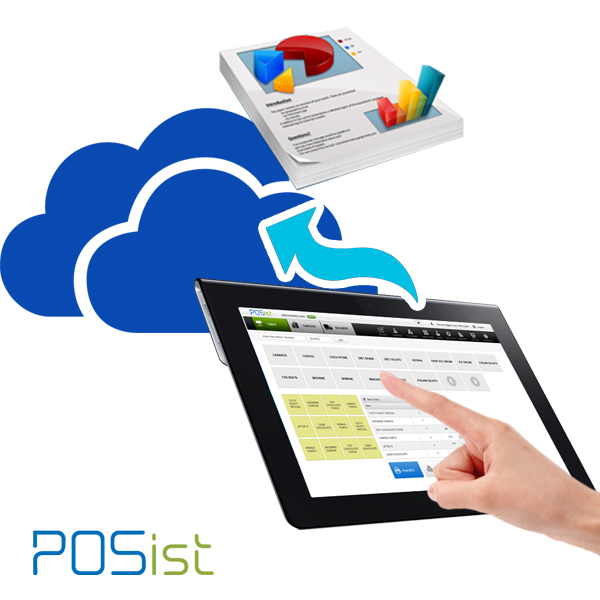
Menus could be upgraded and changed more frequently and more efficiently without any printing costs and checks could be split. Life became easier for restaurant chains and multiple food outlet brands that needed to maintain consistency as well as their operations through the Central Kitchen Management feature. Credit cards started getting processed over the Internet speeding up operations. And, the POS could show more than just the taxes; it showed the total credit card transactions, cash transactions, and overall restaurant sales.
The Restaurant Point of Sale has come a long way from the bulky cash registers and has evolved to become a complete restaurant management software. Today, agile cloud-based Point of Sale software, also called as Software-as-a-Service (SaaS) store data on remote servers and make information accessible online 24/7. Cloud technology also ensures that there is no loss of data due to a technical, human-made, or a natural calamity. With its help, restaurants can create a better guest experience and build efficient work environments.
With the help of a tableside POS tablet, the customers can consult the menu on an iPad (check out the ingredients in every dish and the calorie content) and place an order, saving the server some time and help turn the tables faster. At the end of their meal, customers can use the tablet to leave their opinion/feedback.
The POS software saves time by reducing server trips to the terminal. Guests no longer need to accompany the server to swipe their credit card on the EDC machine kept at the front office/reception desk and return to the table. By using a handheld tablet, the guests can make payment and complete their transactions from the comfort of their dining seats. POS tablet not only ensures a customer-friendly service but also reduces customer wait time on the table and in the queue, thereby enabling the restaurant to serve more customers speedily and efficiently.
Another advantage associated with Point of Sale software for restaurants is its real-time integration with inventory management. Restaurateurs can track and manage their raw material and stock in the kitchen in a flash instead of spending countless hours on manual calculations. It can help them know the shelf life of the products and how long the current stock will last, allows them to set reminders to order when it gets depleted, know top selling items on the menu and helps reduce wastage. They can also assign permissions to access the inventory, thus reducing the risk of pilferage. If a restaurant operates from more than one location, it can maintain a centralized, POS enabled inventory management system instead of visiting every location in person to supervise.
A restaurant owner need not be physically present to make sure that his restaurant is running smoothly. He has to log on to the cloud software to keep an eye on his business. He can check employee check-ins and payroll, footfall and sales or the status of food supplies with just a few clicks.
With customer resource management (CRM) solutions, restaurateurs can use customer data to deploy email marketing and influence loyalty programs, and online ordering.
 Innovations in the Restaurant Point of Sale Software
Innovations in the Restaurant Point of Sale Software
The Restaurant Point of Sale software has come a long way from only billing to a complete restaurant management system. Technological innovations and third-party integrations have made the POS pretty much the only software that is needed to run a restaurant successfully. From stock and inventory management to detailed reporting and Customer Relationship Management, the new-age cloud restaurant POS provides complete automation of the restaurant operations.
Technology in the foodservice industry has changed and lot with the new features rolling out every now and then!
1. Online Ordering
Lately, the Food Tech industry has seen a lot of innovation, with Online Food Ordering and completely revolutionizing the Food Delivery scenario. Integrating the Online Ordering feature into the POS, or third-party integrations make the receiving of online orders very easy. A typical restaurant accepts orders from multiple Online Ordering Solutions providers such as FoodPanda, Swiggy, Zomato, etc. POS integration allows the orders to get automatically accepted into the POS, instead of manual entering of the online orders.
2. Online Payment Integration
The billing system is getting further improved with the introduction of mobile or virtual wallets. These mobile wallets are a mobile payment system that stores users’ credit card information and can be used to make mobile payments without sharing the credit card number with the merchant, and hence providing enhanced security. Now, bill generation and payment can be done via mobile phones and guests can settle their bill as soon as they have finished eating, speeding up the bill settlement process. There are a few online payment options already on the market, such as PayTM and Freecharge.
3. Increased Customer Engagement
Restaurant owners were quick to realize that just acquiring customers was not enough. To survive in the competitive restaurant industry, you need to retain customers. Thus came the CRM software into the picture, and over time, evolved into a robust customer management platform. With CRM integration, the Point Of Sale software for restaurants can acquire customer feedback, analyze and generate reports based on customer behavior. It also allows you to send promotional e-mails and SMS to your customers.
4. Large Chain Management
The restaurant POS has evolved to become a comprehensive restaurant management suite that enables restaurant operators to manage multiple brands and outlets with ease. The POS system can be integrated with the ERP system, and effectively interacts with the Accounting tools, HR Management systems, etc. This eliminates the hassle of manually consolidating reports from multiple sources, giving operators complete control over the restaurant chain operations.
Technology is an ever-evolving one. Restaurant Point Of Sale technology has helped the restaurant industry to automate and optimize its operations exponentially, and the future seems to hold a lot in store too.


